“The White Trees” Issue 1 Review: Emotions, Queerness, Fantasy & More!
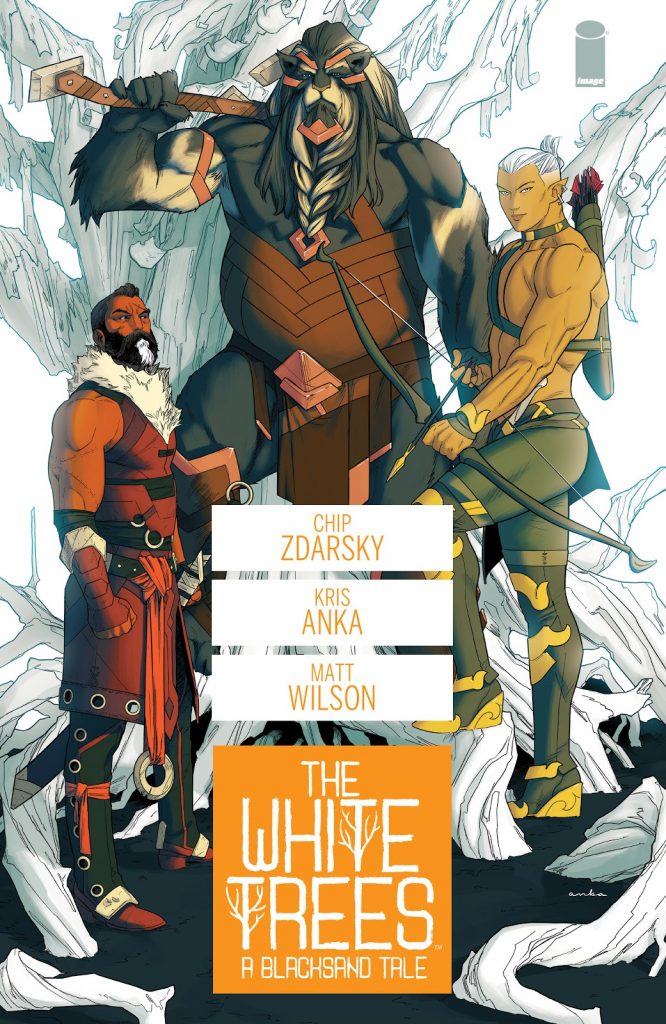
The White Trees Issue 1 offers readers an interesting debut for a 2-issue comic book story. If you’re looking for a narrative set in a world of fantasy with queer leads which also doesn’t ignore the emotional impact of war, I recommend you pick this issue up!
The White Trees Issue 1 is by Chip Zdarsky, whom certain fans might know because of his work on Daredevil and Spider-Man over at Marvel. This current 2-issue story is from Image Comics. Why did I decide to read it? Well, I don’t know if it’s a superpower or not, but like to think I have an impressively tuned gaydar. It was because of this skill I read Freelance (the cover looked queer to me). And the same ended up being true for The White Trees. It’s incredibly queer and definitely not meant for kids. I’m talking full-on nudity (and aroused body parts) here. So, be cautious.
Coming to the story, it’s brought to life through the artwork by Kris Anka and Matt Wilson. There is a sense of simplicity in the overall illustrations, however, even then each panel is able to exude a mood that fits well with the narrative. The world of Blacksand is vast and fantastical, yet there is a sense of gloom and war around.
Our leads are Krylos (some type of humanoid), Scotiar (an elf), and Dahvlan (lion-person). All three are regarded as legends, but they have moved on to living war-free lives. Things change when Krylos’ son and Dahvlan’s daughter are kidnapped. The three set out to rescue the children because their King’s hands are tied due to the current war.
As far as the queer component is concerned, Scotiar and Dahvlan are in a relationship. Dahvlan was married to Milola (a female of his species) and that’s how he fathered a daughter. Milola and Scotiar don’t share any bad blood. There’s a lot of progressiveness going around, which I appreciated.
I’m not sure if Krylos is completely straight or not. During the scene where a bunch of pixie-type creatures tried to seduce him, the leader of the pixie group seemed to have fluid gender. So, I’m not sure. But anyway, the point is The White Trees definitely doesn’t shy away from being hella queer.
Each character has a lot of baggage to deal with. I liked seeing how they coped with their emotions in their own way. Krylos mourned the death of his wife. He had also laid down arms after the war and refused to fight. The scene between him and a chained dragon was very interesting.
Scotiar’s feelings about being forced to be a step-father to Dahvlan’s daughter also came forward. And I think Dahvlan is struggling with suicidal thoughts.
The White Trees Issue 1 presented so much potential, it made me wish the story would last longer than just two issues.
Apparently, this 2-issue series will be the first in many stories set in the world of Blacksand. I’m excited to see what happens next.
Again, if you’re looking for a new story that isn’t your usual superhero fare and doesn’t shy away from having queer leads or exploring the emotional impact of being a soldier, go pick up The White Trees. It doesn’t offer anything unique to the genre, but it still works wonderfully!
Feel free to share your thoughts with us.
Author: Farid-ul-Haq
Farid has a Double Masters in Psychology and Biotechnology as well as an M.Phil in Molecular Genetics. He is the author of numerous books including Missing in Somerville, and The Game Master of Somerville. He gives us insight into comics, books, TV shows, anime/manga, video games, and movies.
Help support independent journalism. Subscribe to our Patreon.
Copyright © The Geekiary
Do not copy our content in whole to other websites. If you are reading this anywhere besides TheGeekiary.com, it has been stolen.Read our

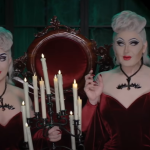
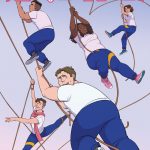
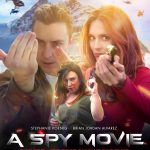
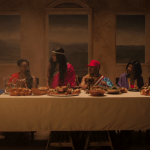
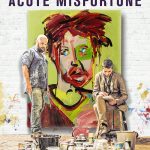
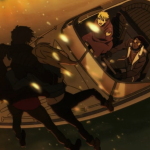
I think your gaydar has somehing to do with the ability to recognize if artwork was drawn by an artist who finds male bodies sexually attractive. I actually thought the artist was female, at first glance. The publisher’s plot summary plus the all-male cast made me suspect that this would be a typical throwback conan-like hetero male power fantasy, but I thought “It’s only 2 issues, and the art is pretty, so let’s give it a chance.” I should have had more trust in Chip Zdarsky, but in the moment of deciding whether to read this, I had forgotten that he’d done a series with a gay protagonist before (Kaptara). But Sex Criminals also turned out to have quite a lot of diversity (eventually, among the secondary characters) and feminist appeal, so I thought “He can’t have written something as retrograde as the publisher is making this seem. Maybe there will be some interesting exploration of the toxic masculinity tropes in he high fantasy classics at least.”
Needless to say, I was very pleasantly surprised when it turned out that two of the three heroes are a long-term couple. And I was surprised in all kinds of ways when that fairy orgy started with so much blatant full frontal male nudity. (So were most readers who picked up the comic, apparently, and not in a good way. Unlike other comics aimed at a mature audience with a gay hero – such as the Midnighter and Midnighter and Apollo comics by Steve Orlando – the audience reviews for The White Trees are far worse than the high marks i got from professional critics. I didn’t read the negative reviews, but I’m betting that a lot of fanboys picked up The White Trees not expecting anything gay, and were angry about it. Sadly, that’s still how this world works – LGBTIA content is fine, but you’ve got to “warn” people about it by giving at least a hint in the summary, especially for series that seem to be taylor-made for a straight male audience at first glance. The Spartacus TV series had the same problem with outraged straight fanboys feeling entitled to have “their” show free of visuals and storylines designed to appeal to gay/bi viewers. (And, to a much lesser degree, the Black Sails TV series, which didn’t acually have much on-screen gay male content but at the end of the second season suddenly revealed one of their badass anti-hero main characters as mourning his long-lost male lover as the main motivation behind his private war on the British Empire.)
I was wondering at firs why the gay elf looks so buff – but then I realized that the artist was actively trying to avoid the common heteronormative image that a male same-sex couple consists of a manly guy and a femme guy. And I finally realized that the artists must be gay themselves when it turned out that the buff elf was generally into guys even more burly than himself (i.e., he’s not just together with the bear-type lion man because he happened to form a battle-born attachment to the guy and, well, all people of that species are this huge). This is always how you can tell apart m/m erotica created by women and actual gay erotica by gay artists.
I didn’t get the impression that the bisexual lion man was suicidal, though. Sadly, he was the least developed of the main characters. I mean, he had a few conflicts (with his ex-wife, with his former human-ish friend) and a lot of anger issues, but no real conflict resolution or character growth over the course of the 2 issues. He seemed to be mainly there to be a more traditionally masculine foil to the human-ish character and his unwillingness to do violence. Well, perhaps this character will get more development in further comics in the series.
As for the human-ish main protagonist, I think he was meant to read as straight and either stoically “above the influence” (which is an old heroic ideal trope for straight male heroes that goes back all the way to Greco-Roman antiquity) or clinically depressed (which kills your libido). But I liked that the artists and writer kept this point vague – the leader of the fairies threw an orgy at the character that consisted of all possible pairings (only about 1/3 purely hetero couples or f/m/f threesomes) and the fairy who personally laid hands on him to seduce him was always kept behind his body, so we couldn’t see the fairy’s body, only their androgynous face and hands. Considering hat the fairies that came to he other heroes were clearly meant to visually establish the characters’ sexual orientations, I think this lack of definite gender for the human-ish hero’s seducer was intentional. (Which also works o disspell the unfortunate implications of the straight hero not falling for the fairy seduction / magic at all due to his “resolve”, while the queer characters are too distracted by their horniness and are barely resisting, at least at first.) And you could even interpret his total lack of “an ember to fan into flame” (as the fairy leader put it) as him being asexual, not just grieving, depressed and emotionally frozen. I don’t think this reading was intended – from Sex Criminals, I know that the writer knows asexual people exist, but the clinical depression reading is more likely in this case – but I still appreciate that it was left open to interpretation.
Sorry, my T key is stuck. I try to fix the mistakes, but unfortunately, I don’t catch every single one.
By the way, to anyone who likes their High Fantasy stories to be LGB-inclusive, I would recommend Vox Machina / Critical Role. The Origins comics currently being published don’t make it obvious (yet), and the RPG show it’s based on is not sexually explicit or heavily focussed on romance, and it’s mainly made by straight people (the one bi-identifying player wasn’t publically out yet while this story was being collectively created, and he plays a probably-straight character in this campaign), but they do try very hard to be inclusive and respectful in their portrayal. Of the main characters in the Vox Machina party, the twins Vex and Vax are bisexual, and Scanlan has basically tried anything that moves (even if he sees himself primarily as a lady’s man). Depending on how long this Origins comic series is going to run, they should also get around to the first introductions of a few frequently recurring queer NPCs who are very beloved by the show’s audience. (The wizard Allura and Paladin Lady Kima, who eventually become a couple, and the sorceror/shopkeeper Gilmore, who is basically a High Fantasy version of Pree from the Killjoys TV series, and who conducts a long-running flirtation with Vax.) If the comic doesn’t get to this point, there is an animated series planned (and already financed via a ridiculously sucessful Kickstarter), which will cover the first 35 episodes or so of the broadcast RPG sessions (which take place about 2 years after the Origins comics, which in turn are designed to show some of the more important plot points that happened when this entire multimedia phenomenon was still just the player group’s private home game that no-one else go to see.)
The RPG show Critical Role itself has long since moved on to a new campaign story with an entirely different set of characters, several of which are openly queer. Because unlike in the beginning of the show (tabletop RPG being a genre that is tradionally thought of as appealing primarily to straight fanboys), the creators now know that their generally feminist-friendly tone and tentative forrays into queer content have attracted a large female and LGBTQIA fanbase that will welcome this inclusivity.
Oh, another thing I really liked about the queer representation in The White Trees: Not only did they make it clear that the elf was NOT responsible for breaking up the lion man’s previous marriage (the wife left because her soldier/adventurer husband was never home), but he also seemed completely free of any worry or jealousy based on the fact that his lover/husband is bisexual. When they were separately seduced during the encounter with the fairies, I first raised an eyebrow at how easily the elf was giving in to the guy who was seducing him – thoughts that he shouldn’t cheat on his partner of 20 years never even occurred to him. But then what the elf said to the lion man to get him to resist his own pair of seducers made clear that they apparently have a very trusting and healthy open relationship (which I gather from statistics is not unusual for gay male relationships in real life, at least in the US):
“I know you need this and I want you to have it – but it’s a trap.”
Given that this scene could have easily been written as a (hypocritically) jealous row between the lovers, and the writer could have used the incident for more relationship drama as TV writers are so fond of (queer relationships are almost never allowed to be happy and stable in fiction, or if they are, they’re completely sidelined and happen off-screen), this lovely bit of dialogue really stood out for me.